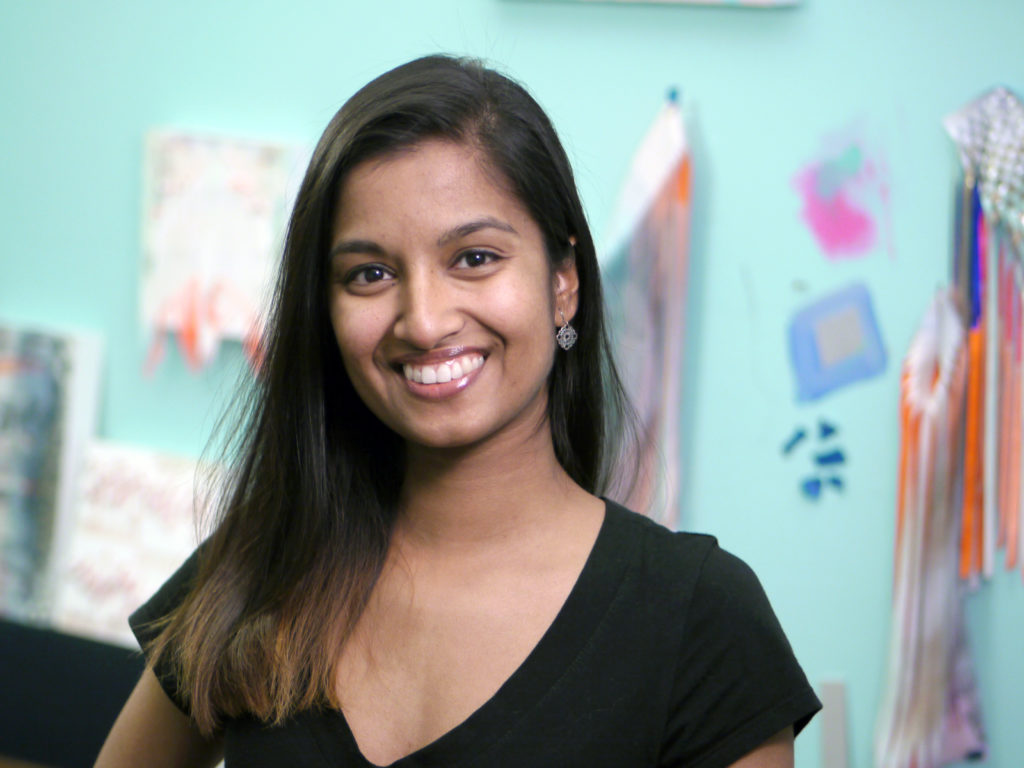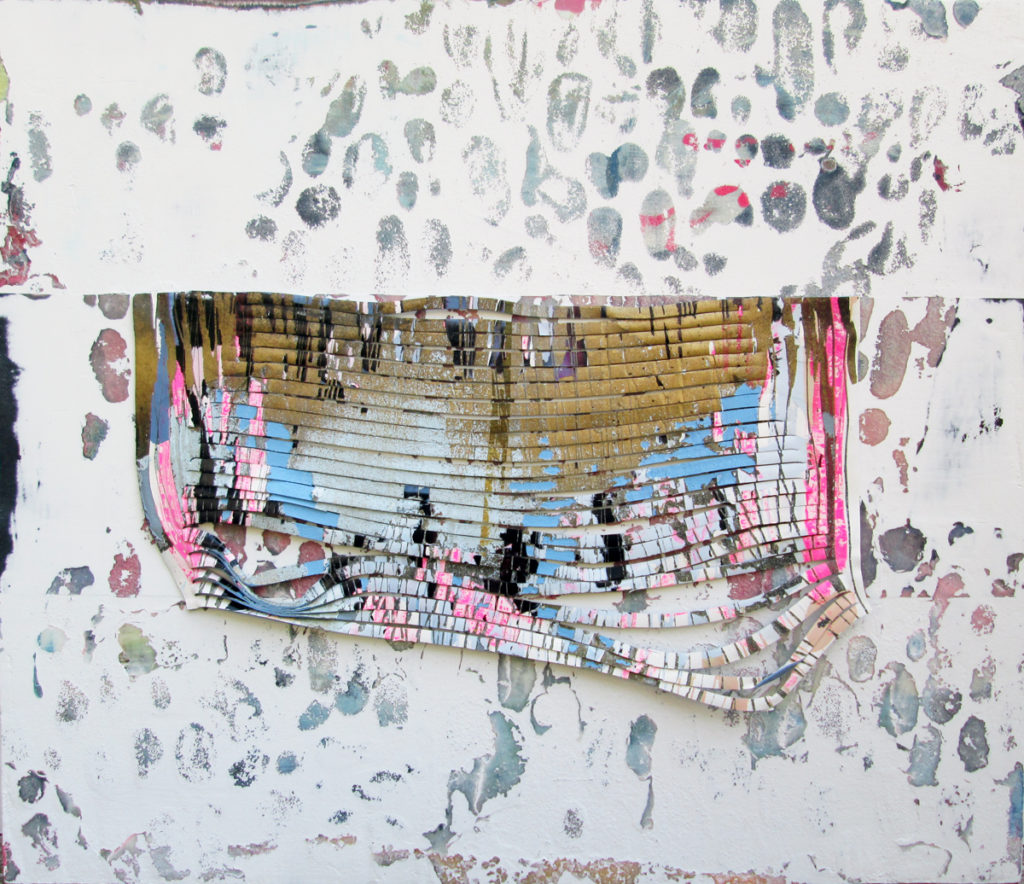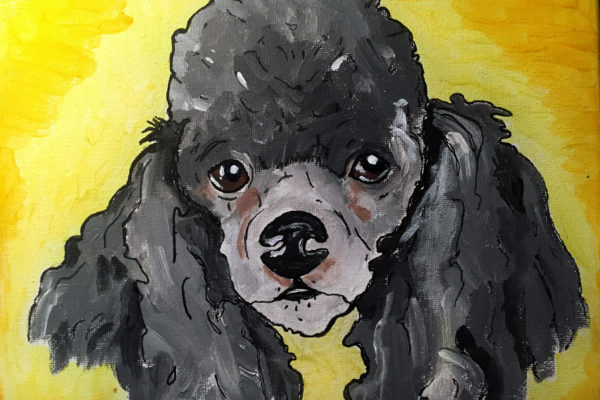Manty Dey’s work is precise, layered, magnificently rendered and, in a word, stunning.
Born in Kumarghat, India, Dey moved to Georgia with her family when she was just 6 years old. She received her BFA in painting and drawing from Georgia State University, then an MFA from the University of Georgia in 2014. She was a Walthall Fellow for their 2015/2016 program and has exhibited work at Swan Coach Gallery, MOCA GA, Mint Gallery, and Mason Fine Art (formerly Mason Murer Gallery).
Here, the artist talks to CommonCreativ about “visual indulgence,” her multi-step creation process, and what continues to inspire and motivate her.
CommonCreativ: Tell me about your artistic background.
Manty Dey: I have always enjoyed making things with my hands and learning how materials interact and inform each other. My work is guided by a curiosity, obsession, or subtle observation that occurs during the making process. During my graduate studies, I pursued my interests in paper and weaving to gain more knowledge about how surfaces are constructed and manipulated. The simple idea that a surface can fluctuate and be dimensional led to my current body of work consisting of sculptural paintings, acrylic sheets, and hand-cut paper forms.
CC: Your work has common themes of precision, texture, color, form, and repetition. How did you develop your style?
MD: I want my paintings to be objects of adornment, works that lure the viewer and offer moments of visual indulgence for the curious eye. I rely on formal elements such as bilateral symmetry, fluorescent colors, gradients, and repeat patterns to navigate through the paintings. These recurring elements are a common thread because they enhance the sculptural part of the work.
CC: What’s your artistic process?
MD: My studio practice is a process of trial and error. I enjoy painting because it has many life cycles that get compressed into a dense surface. The surface holds small important moments that guide the painting, but the viewer will not see it. I want to bring those moments back whether it’s through cutting or carving out the surface.
There is a satisfaction to cutting that I thoroughly enjoy in my work. Cutting is a slow, meditative, and repetitive process. It’s a deliberate and controlled way of working, and it balances out the earlier stages of the painting where I have less control over the surface. It’s also a reward system for me. Each dissection unveils traces of intentional and improvised gestures as they accumulate and dissolve over time and temperament.
CC: Your paintings are often layered and precise. How do you work to execute your vision?
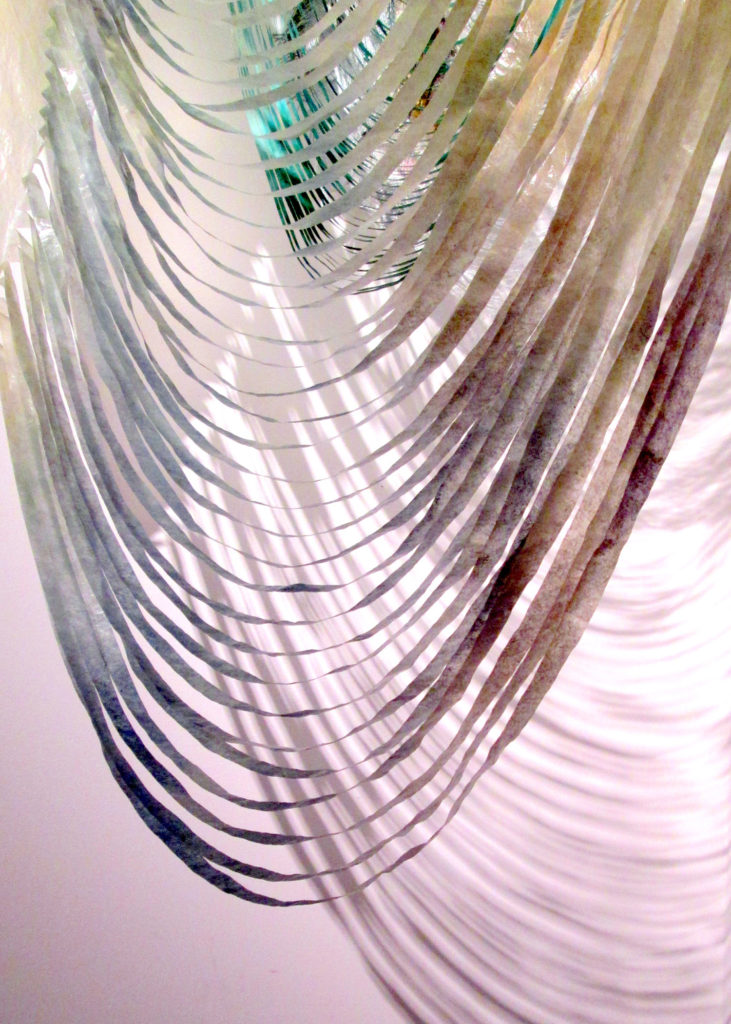 MD: My interest in making paintings is centered around the surface of the paint. Recognizing paint as a substance profoundly changed the trajectory of my work by allowing me to see the image, material, and object as one. I make acrylic sheets by pouring paint on glass, and control the sequence of the pour to make color compositions. Once they’re dry, I peel off the malleable sheets of acrylic. I approach the sheets as fabric and begin to mend them by cutting, folding, and sewing them together. The part that I find most intriguing is that through the manipulation you can see the colors not only on the top but also on the back of the sheets. The paint is a physical material, the color has a glow, and its cast shadows create volume. All of these elements activate the image. I’m thinking of ways to make each painting breathe and vibrate.
MD: My interest in making paintings is centered around the surface of the paint. Recognizing paint as a substance profoundly changed the trajectory of my work by allowing me to see the image, material, and object as one. I make acrylic sheets by pouring paint on glass, and control the sequence of the pour to make color compositions. Once they’re dry, I peel off the malleable sheets of acrylic. I approach the sheets as fabric and begin to mend them by cutting, folding, and sewing them together. The part that I find most intriguing is that through the manipulation you can see the colors not only on the top but also on the back of the sheets. The paint is a physical material, the color has a glow, and its cast shadows create volume. All of these elements activate the image. I’m thinking of ways to make each painting breathe and vibrate.
The sculptural paintings are built up with poured latex paint and sanded down until the surface is completely smooth. Lately, I’ve been interested in extracting repeat patterns and vibrations of color from the compressed surface. Then I will apply thin layers of gesso to the surface until it becomes a sheet of paint sitting on top. Finally, I cut away the gesso layer to slowly reveal what’s underneath. I enjoy peeling back the strips of acrylic and seeing parts of the paintings that were previously preserved. The meticulous cuts transform the flat painting into a sculptural form.
CC: Tell me about the inspiration behind your paper forms.
MD: I respond to paper as a material because it easily shifts between two-dimensional and three-dimensional forms. It can be a surface, an image, or altered to be an object. The inherent qualities of paper, reminiscent of fabric, sensitivity to air and light are ideas that inspire my work. I’m interested in the moments when the material and the image are on the verge of disappearing, dissolving, and reappearing. The paper forms are hand-cut sheets aligned together to create subtle vibrations of color that reveal and conceal the surrounding space.
Similar to the sculptural paintings, the paper forms go through many phases. I begin by hand-dyeing large sheets of Kozo-Shi [paper rolls] with a fiber reactive dye. I think about how colors disappear, advance, recede, and reappear on the surface. I also brush on bleach to interrupt the subtle gradients to complete the color composition. Finally, I coat the paper with polyacrylic and gloss medium to add sheen to the surface. By the end, each sheet of paper looks like a luminescent plastic film.
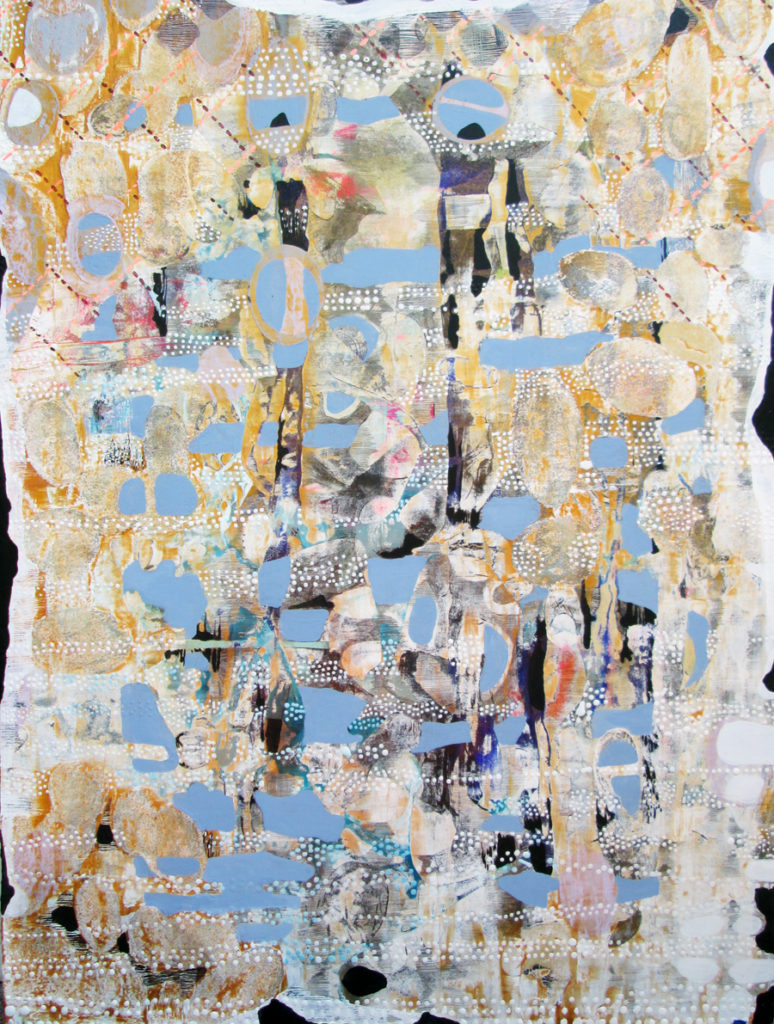 I meticulously cut the paper until it shifts from a rectangle sheet into an undulating sculptural form. The act of cutting, though simple, repetitive, and ritualistic, is the foundation of the paper pieces. When one sheet is placed in front of another, the superimposed strands of color create a sequence of vibrations that play with our perception of spatial ambiguity. There is a union of stillness with movement, absence with presence, and light with shadow. These visual elements continue to inspire my work.
I meticulously cut the paper until it shifts from a rectangle sheet into an undulating sculptural form. The act of cutting, though simple, repetitive, and ritualistic, is the foundation of the paper pieces. When one sheet is placed in front of another, the superimposed strands of color create a sequence of vibrations that play with our perception of spatial ambiguity. There is a union of stillness with movement, absence with presence, and light with shadow. These visual elements continue to inspire my work.
CC: What else inspires you?
MD: I get motivation by seeing other artists make the things they make. I believe creating something is the ultimate reward. It’s kind of simple, but it inspires me to keep creating things. I also want to see how my paintings change over the years, so there is still a lot more work to do. I am inspired by color field paintings, biomorphic abstraction, Indian textiles, geodes, cast shadows, plants, and rituals.
CC: Who are some of your favorite artists?
MD: A few of my favorite artists right now are Leigh Suggs, Zackery Keeting, Erin Castellan, and Darina Karpov.
CC: What’s been one of your proudest artistic moments?
MD: Last spring, I painted a three-story mural inside of an elevator shaft in a client’s home. Everything about the project was a challenge, and I had to improvise along the way. When I planned out composition, I envisioned a continuous transition between the imagery. In reality, I was only able to paint small sections of the wall at a time. So, I got rid of my plan and painted intuitively. It was a great learning experience, and I want to take on more projects that take me outside the studio.
CC: How do you promote yourself?
MD: I use Instagram daily to share my work. It’s a great tool to find new artists and learn about their studio life. I’m always curious about materials, techniques, and how things are put together, so it’s a great place to peek into someone else’s practice.
CC: What’s next for you?
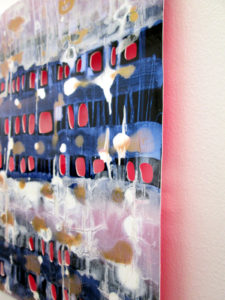 MD: I’m working on a series of sculptural paintings with gesso and salt for my next round of applications. I’m forcing myself to limit my palette and materials and see where it takes me. I’m also planning on hand-dyeing paper once the weather is warmer. My goal for the year is to make larger paintings.
MD: I’m working on a series of sculptural paintings with gesso and salt for my next round of applications. I’m forcing myself to limit my palette and materials and see where it takes me. I’m also planning on hand-dyeing paper once the weather is warmer. My goal for the year is to make larger paintings.
CC: What are some of your favorite art happenings or organizations in Atlanta?
MD: WonderRoot is an amazing organization that offers a lot of opportunities for emerging artists. I was part of the Walthall Fellowship, a professional development program that helped me understand the art community better. They do a great job connecting artists to local resources. I also look forward to the murals brought together by Forward Warrior each year.
CC: Lastly, how would you describe the local arts scene?
MD: Atlanta is a great place to branch out and collaborate with other artists and organizations. There are lots of opportunities to show work as an emerging artist. A lot of my peers from Georgia State are making a strong presence in the community, and it’s inspiring to watch them thrive.
See more of Manty’s work on her portfolio site, Instagram, and Facebook.

